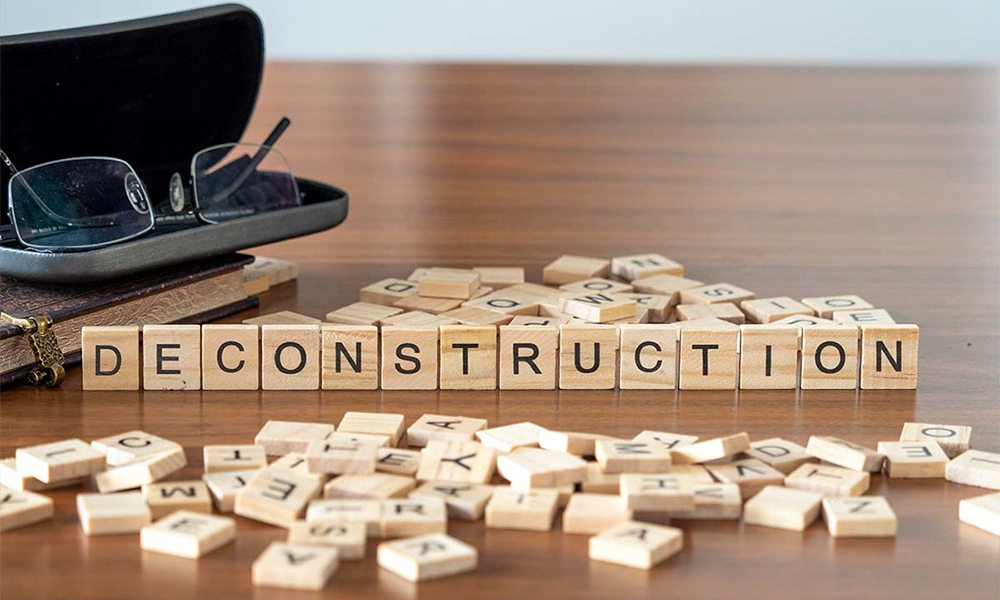CPAs and tax attorneys often have clients taking non-cash charitable contributions for building materials and other property incident to a home deconstruction. Deconstruction involves the careful dismantling of a structure with the intent of salvaging materials for reuse in new structures.
Real Property vs Personal Property Appraisals
As appraisers, we follow generally accepted appraisal standards promulgated by congressionally formed The Appraisal Foundation. These standards are the Uniform Standards of Professional Appraisal Practice (USPAP)
Real property is included under USPAP Standards 1-6
Personal Property is included under Standards 7-8
A real estate appraisal is a valuation of land, improvements, and associated rights. A personal property appraisal values movable property that is not attached to a home or building.
In the case of valuing intact real estate improvements, or the buildings attached to the underlying land, the value of the whole is always worth significantly more than the sum of its detached personal property parts. Improvements derive their value from being intact and affixed to land.
US Tax Court has provided precedent setting case law addressing this subject in Mann v. US 2019 and the lost appeal in 2021. An analysis of the case is found here:
In this case, the donor had their deduction disallowed by the IRS. The first appraisal remitted to the IRS was a real estate appraisal of intact improvements, as if the home had been lifted from the existing land and removed to a new location. The appraisal was rejected because the detached building materials were not intact real property and should not have been valued as such. The second appraisal remitted was for approximately half the value of the improvement property and was also rejected due to the appraisal not being qualified for myriad reasons.
Unfortunately, some nonprofits are continuing to engage deconstruction clients and instructing them to substantiate the deduction based upon a real property appraisal rather than personal property appraisal.
The example below provides the difference in valuation and perhaps the motivation behind promulgating the false premise of substantiating a personal property donation with a real property appraisal.
Real estate value $1,000,000
Divided between:
Land value: $250,000
Improvements $750,000
Some appraisers are using the full $750,000 improvement value as the Fair Market Value of the detached personal property. The same home, in a deconstructed state may have an actual personal property appraised valuation of $100,000 to $200,000.
The Severance Principle
Real property converts to personal property as soon as it is detached from the real property. When you remove a door, cabinetry, windows, appliances, toilets, sinks, or lumber from real property, it instantly becomes personal property. Severance is the opposite of attachment; whereby personal property is attached to an intact structure and becomes part of the real property value.
These principles are taught in the three personal property appraisal organizations sponsoring The Appraisal Foundation:
American Society of Appraisers
Appraisers Association of America
International Society of Appraisers
Most nonprofits who accept building materials incident to donation have formed their 501(c)(3) with an environmental mission. This environmental mission does not allow for real estate values to be claimed in lieu of correct personal property donation values when substantiating a charitable contribution.
Those encouraging the valuation of the wrong asset are perpetuating an illegal tax shelter.
To make matters worse, the donor could be audited, and that usually occurs 2-3 years after donation. The donor could have the entire donation disallowed because they valued the wrong assets: real property instead of personal property. The donor will incur understatement of tax liability fines, possibly gross understatement fines of 20% (if income was understated the greater of 10% of the tax due or $5,000), as well as interest charges.
Appraisals of Personal Property
If clients are donating personal property, they need to be sure to hire a credentialed personal property appraiser from one of the three above-listed personal property appraisal organizations. This video from The Appraisal Foundation states that you do not hire an uncredentialed CPA, doctor, or attorney and you should require the same standards from your appraiser:
https://www.youtube.com/watch?v=fOQClwk1UZs&t=4s
As CPAs, we must always protect our clients. In reviewing a personal property appraisal. The article below details how to determine if your appraiser is qualified:
https://www.thegreenmissioninc.com/article/irs-qualified-appraisers-and-appraisals-matter
CPAs should also review the appraisal to ensure it is complete and includes all required information as detailed in this article.
https://www.thegreenmissioninc.com/article/the-green-mission-inc-appraisa-updates
Clients choosing to deconstruct and donate materials are helping to keep millions of tons of high-quality usable material out of our landfills and put towards reuse with a second life. The tax deduction for these donations is critical to move the needle away from dumping and towards donation. However, with anything pertaining to the IRS, these donations must be documented correctly, and value substantiated by the correct type of appraisal or the client and the environment both lose.
Please contact our offices and peruse our website for more information on deconstruction and associated tax deductions and appraisals:


